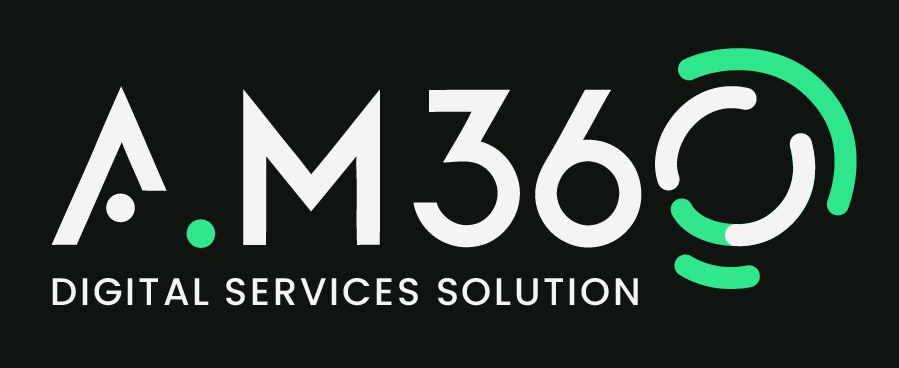
Project Management Hacks: How to Complete Projects Faster and Smarter
Project management is the backbone of successful business operations. Whether you’re launching a product, organizing an event, or leading a software development team, the ability to manage projects efficiently determines whether you meet deadlines, stay within budget, and achieve your goals. However, even seasoned professionals struggle with delays, miscommunication, and scope creep. In this comprehensive guide, you’ll discover actionable strategies to optimize your project management process, leverage cutting-edge tools, and foster team collaboration to deliver results faster and smarter. From agile methodologies to risk mitigation frameworks, we’ll cover every facet of modern project management to help you build topical authority and drive success. 1. Agile Project Management: Flexibility Meets Structure What Is Agile Project Management? Agile project management is a dynamic approach that prioritizes iterative progress, collaboration, and customer feedback. Unlike traditional “waterfall” methods, which follow a linear sequence, agile breaks projects into smaller cycles called sprints, allowing teams to adapt quickly to changes. Key Principles of Agile: Customer collaboration over rigid contracts. Responding to change over following a fixed plan. Delivering working solutions incrementally. Agile in Action: The Spotify Model Spotify’s famed “Squad Model” exemplifies agile success. Teams (or “squads”) operate autonomously, focusing on specific features, while aligning with broader company goals through “chapters” and “guilds.” This structure reduced time-to-market by 30% and boosted innovation. Benefits for Speed and Efficiency: Faster Feedback Loops: Daily stand-ups and sprint reviews ensure issues are addressed promptly. Reduced Waste: By focusing on high-priority tasks, teams avoid over-investing in low-impact features. Enhanced Accountability: Clear roles (Scrum Master, Product Owner) keep everyone aligned. Learn more about Agile principles from the Agile Manifesto. 2. Mastering Project Planning: Blueprints for Success The 5 Pillars of Effective Project Planning Define Scope: Outline deliverables, exclusions, and boundaries to prevent scope creep. Set SMART Goals: Ensure objectives are Specific, Measurable, Achievable, Relevant, and Time-bound. Create a Work Breakdown Structure (WBS): Divide projects into manageable tasks. Develop Timelines: Use Gantt charts to visualize dependencies and milestones. Allocate Resources: Assign budgets, tools, and personnel early. Tools to Streamline Planning Trello: Visualize tasks with Kanban boards. Microsoft Project: Build detailed Gantt charts. Smartsheet: Combine spreadsheets with automation. Pro Tip: Use historical data from past projects to estimate timelines more accurately. 3. Task Delegation: Empowering Your Team Why Delegation Fails (And How to Fix It) A Harvard Business Review study found that 41% of managers struggle with delegation due to fear of losing control or time constraints. However, effective delegation is critical for scaling productivity. The RACI Matrix: Clarify responsibilities with this framework: Responsible: Who completes the task? Accountable: Who approves it? Consulted: Who provides input? Informed: Who needs updates? Delegation Tools to Try Asana: Assign tasks with deadlines and priorities. Monday.com: Track progress in real-time. Case Study: At Netflix, managers delegate decision-making authority to frontline employees, reducing bottlenecks and accelerating innovation. 4. Time Management Techniques for Project Managers The Eisenhower Matrix: Prioritize Like a Pro Categorize tasks into four quadrants: Urgent & Important: Do immediately. Important, Not Urgent: Schedule. Urgent, Not Important: Delegate. Neither: Eliminate. Combatting Parkinson’s Law Work expands to fill the time allotted. Use timeboxing (e.g., Pomodoro Technique) to set strict limits. Tools like Toggl or Clockify track hours and identify inefficiencies. Pro Hack: Batch similar tasks (e.g., emails, meetings) to minimize context-switching. 5. Productivity Tools: The Digital Advantage Top Tools for 2024 ClickUp: All-in-one platform for tasks, docs, and goals. Jira: Agile-focused tool for software teams. Notion: Customizable workspace for collaboration. Integration Tip: Sync tools with Zapier to automate workflows (e.g., Slack notifications when tasks are overdue). 6. Workflow Optimization: Lean and Mean Lean Methodology: Eliminate Waste Toyota’s 5S Framework: Sort: Remove unnecessary items. Set in Order: Organize tools for efficiency. Shine: Maintain cleanliness. Standardize: Create consistent processes. Sustain: Regularly audit workflows. Kanban Boards: Visualize work stages (To-Do, Doing, Done) to identify bottlenecks. 7. Team Collaboration: Building Synergy Foster Psychological Safety Google’s Project Aristotle found that psychological safety—where team members feel safe to take risks—is the top predictor of high-performing teams. Tools for Collaboration: Slack: Instant messaging with channel organization. Miro: Virtual whiteboarding for brainstorming. Conflict Resolution Strategy: Use the “Interest-Based Relational Approach” to focus on shared goals. 8. Risk Management: Preparing for the Unexpected 4-Step Risk Management Framework Identify Risks: Brainstorm potential issues (e.g., budget overruns, tech failures). Analyze Impact: Use a risk matrix to assess likelihood and severity. Develop Mitigation Plans: Create fallback strategies (e.g., backup vendors). Monitor Continuously: Review risks in weekly check-ins. NASA’s Approach: The space agency conducts “Pre-Mortem” sessions to anticipate failures before launch. Conclusion: Integrate, Adapt, and Succeed Completing projects faster and smarter isn’t about working harder—it’s about working strategically. By combining agile methodologies, robust planning, and the right tools, you can transform your project management approach. Start by implementing one or two hacks, measure their impact, and scale what works. Remember, the best project managers are lifelong learners. Stay curious, experiment with new tools, and foster a culture of continuous improvement. Ready to level up? Explore these PMI resources for advanced strategies and certifications. By integrating these strategies, you’ll not only meet deadlines but also build a reputation for delivering exceptional results. Happy managing! 🚀
Read More
How to Become a Project Manager: 2025 Guide
The demand for skilled project managers is skyrocketing. According to the Project Management Institute (PMI), employers will need 25 million new project professionals by 2030, with roles paying a median salary of $116,000 annually in the U.S. (PMI Salary Survey). If you’re wondering, “How do I become a project manager?”—this 2025 guide covers everything from certifications to landing your first role without prior experience. 1. What Is Project Management? Project management is the practice of initiating, planning, executing, and closing projects to achieve specific goals within constraints like time, budget, and resources. It’s the backbone of industries from tech to healthcare, ensuring teams deliver results efficiently. Why Project Management Matters Reduces Risks: 59% of projects fail due to poor communication and unclear goals (PMI Pulse of the Profession). Boosts ROI: Companies using proven project management practices waste 28x less money (Harvard Business Review). For a foundational understanding, explore PMI’s A Guide to the Project Management Body of Knowledge (PMBOK® Guide), the global standard for project management methodologies (PMBOK® Guide, 7th Edition). 2. Key Elements of a Project Management Framework A project management framework is a structured approach to delivering projects. Let’s break down its core components: Phase 1: Initiation Define Objectives: Use a Project Charter to outline goals, scope, and stakeholders. Stakeholder Analysis: Identify decision-makers, influencers, and end-users. Tools like Stakeholder Mapping Matrices help prioritize communication. Phase 2: Planning Work Breakdown Structure (WBS): Divide projects into tasks (e.g., “Develop wireframes” for a software project). Gantt Charts: Visualize timelines using tools like Microsoft Project or ClickUp. Risk Management Plan: Anticipate obstacles (e.g., budget overruns) and assign mitigation strategies. Phase 3: Execution Agile vs. Waterfall: Agile: Iterative approach for fast-paced industries (e.g., software). Use Scrum or Kanban boards. Waterfall: Linear phases for construction or manufacturing projects. Phase 4: Monitoring & Controlling Key Performance Indicators (KPIs): Track progress with metrics like Schedule Variance (SV) or Cost Performance Index (CPI). Change Control Boards (CCBs): Formal groups to review and approve scope changes. Phase 5: Closure Post-Mortem Analysis: Document lessons learned (e.g., “Poor vendor communication delayed Phase 2”). Handover Reports: Ensure smooth transitions to operations teams. For a deep dive into frameworks, refer to the PMBOK® Guide or PRINCE2 methodologies (AXELOS PRINCE2). 3. Essential Assets for Project Managers To thrive in 2025, project managers need a mix of technical tools, soft skills, and certifications: Technical Assets Project Management Software: Asana: For task tracking and team collaboration. Jira: Ideal for Agile software teams (Atlassian Jira Guide). Smartsheet: Combines spreadsheets with automation. Data Analytics Tools: Tableau or Power BI for real-time project dashboards. Soft Skills Leadership: Inspire teams during high-pressure deadlines. Conflict Resolution: Mediate disputes between stakeholders. Storytelling: Present progress reports persuasively (e.g., “Our MVP launch aligns with a 20% market gap”). Certifications PMP (Project Management Professional): Gold standard for experienced PMs. Requires 35 hours of training and 3+ years of experience (PMI PMP Details). CAPM (Certified Associate in Project Management): Entry-level cert for beginners. CSM (Certified ScrumMaster): For Agile-focused roles. 4. How to Become a Project Manager Without Experience Breaking into project management without prior experience is possible with these strategies: Strategy 1: Leverage Transferable Skills Event Planning: Managed a corporate conference? Highlight budgeting and vendor coordination. Volunteer Leadership: Led a community fundraiser? Showcase team management and timeline adherence. Strategy 2: Start in Entry-Level Roles Project Coordinator: Assist senior PMs with scheduling and documentation. Average salary: $55,000/year (Glassdoor). Business Analyst: Bridge gaps between IT and business teams. Strategy 3: Build a Portfolio Freelance Projects: Use platforms like Upwork to manage small projects (e.g., website redesigns). Case Studies: Document hypothetical projects (e.g., “How I’d Plan a Product Launch in 6 Weeks”). 5. Step-by-Step Guide to Project Management Certification Certifications validate your expertise and open doors to higher salaries. Here’s how to earn them: Step 1: Choose the Right Certification Certification Best For Cost Exam Details CAPM Beginners 225−225−300 150 questions, 3-hour exam PMP Experienced PMs 405−405−555 180 questions, 3 domains CSM Agile/Software Teams 1,000−1,000−1,400 2-day training + exam Step 2: Prepare for the Exam Study Resources: Rita Mulcahy’s PMP Exam Prep: Best-selling guide for PMP aspirants. Udemy Courses: Affordable CAPM/PMP prep courses (Udemy PMP Course). Mock Exams: Simulate test conditions with platforms like PM Training. Step 3: Maintain Your Certification PDUs (Professional Development Units): Earn 60 PDUs every 3 years for PMP via webinars or workshops. 6. The Role of Change Management in Projects Change is inevitable in projects. 72% of PMs say scope creep is their top challenge (Wellingtone Report). Here’s how to manage it: Best Practices for Tracking Changes Change Request Forms: Document requested changes (e.g., “Add chatbot feature to MVP”). Version Control: Use GitHub for software projects or Google Drive for document tracking. Impact Analysis: Assess how changes affect timelines/budgets (e.g., “Adding X feature delays launch by 2 weeks”). Tools for Change Management Monday.com: Automate change approval workflows. Notion: Centralize change logs and stakeholder feedback. 7. Top Tools for Modern Project Managers (2025 Edition) Stay ahead with these 2025-recommended tools: AI-Powered Tools: ClickUp Brain predicts delays using historical data. Remote Collaboration: Miro for virtual whiteboarding and Loom for async video updates. Sustainability Trackers: Ecochain measures project carbon footprints. 8. FAQs About Project Management Careers Q: Does a project manager track and record changes? A: Yes! PMs use change logs, version history tools, and software like Smartsheet to monitor adjustments. Q: Can I become a PM without a degree? A: Absolutely. Certifications (CAPM/PMP) and hands-on experience often outweigh degrees. Q: What industries hire the most PMs? A: Tech, healthcare, construction, and finance (U.S. Bureau of Labor Statistics). 9. Future Trends in Project Management (2025 and Beyond) AI-Driven Decision Making: Tools like Forecast.app automate resource allocation. Hybrid Frameworks: Blend Agile and Waterfall for industries like healthcare. Sustainability Focus: 67% of firms prioritize eco-friendly projects (Gartner). Final Tips for 2025 Success Network Relentlessly: Join PMI Chapters or LinkedIn groups like Project Managers Hub. Master AI Tools: Stay relevant by learning platforms like Zapier for workflow automation. Specialize: Consider niches like Healthcare PMP or Agile Transformation.
Read More